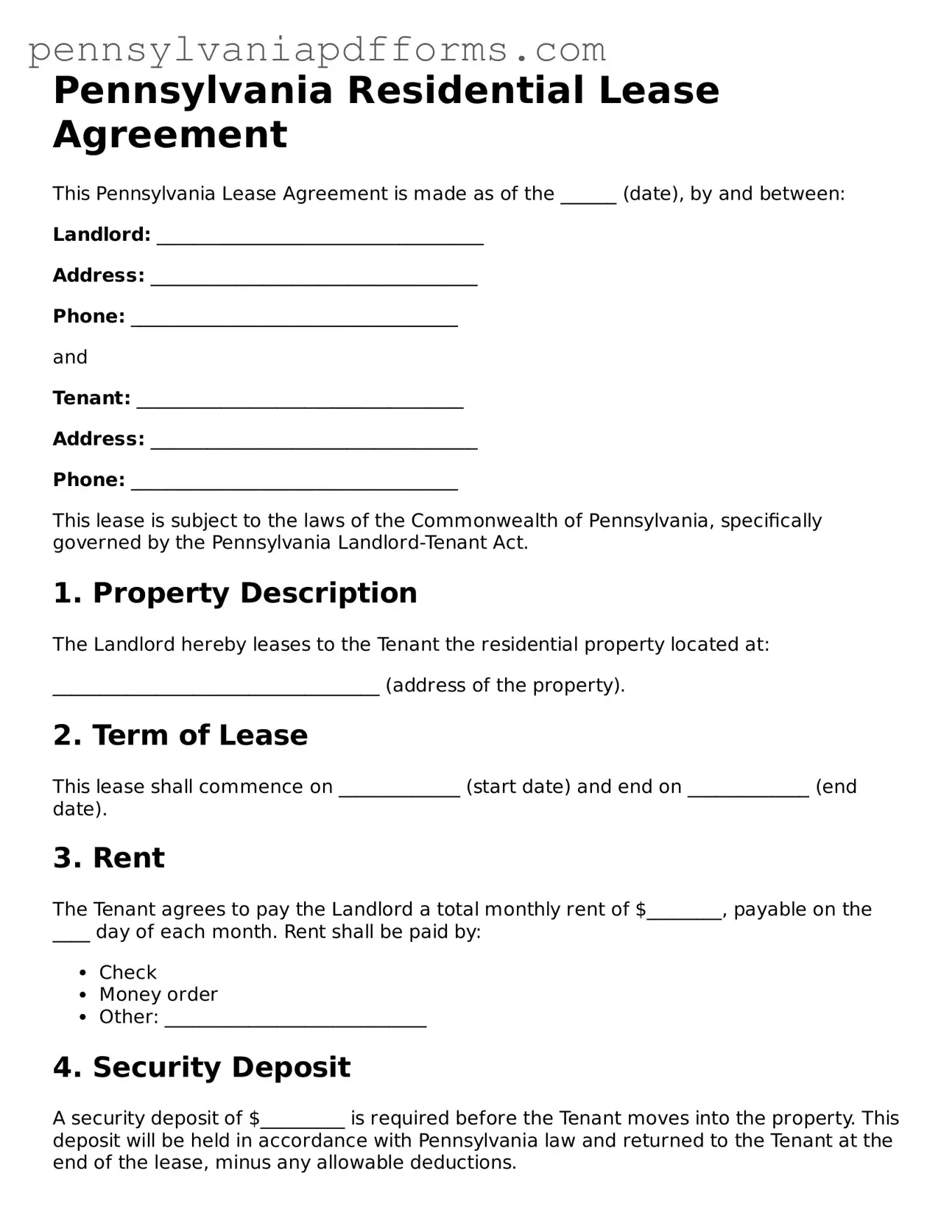Pennsylvania Residential Lease Agreement
This Pennsylvania Lease Agreement is made as of the ______ (date), by and between:
Landlord: ___________________________________
Address: ___________________________________
Phone: ___________________________________
and
Tenant: ___________________________________
Address: ___________________________________
Phone: ___________________________________
This lease is subject to the laws of the Commonwealth of Pennsylvania, specifically governed by the Pennsylvania Landlord-Tenant Act.
1. Property Description
The Landlord hereby leases to the Tenant the residential property located at:
___________________________________ (address of the property).
2. Term of Lease
This lease shall commence on _____________ (start date) and end on _____________ (end date).
3. Rent
The Tenant agrees to pay the Landlord a total monthly rent of $________, payable on the ____ day of each month. Rent shall be paid by:
- Check
- Money order
- Other: ____________________________
4. Security Deposit
A security deposit of $_________ is required before the Tenant moves into the property. This deposit will be held in accordance with Pennsylvania law and returned to the Tenant at the end of the lease, minus any allowable deductions.
5. Utilities
The following utilities will be the responsibility of the Tenant:
- Electricity
- Gas
- Water
- Internet
- Other: ____________________________
6. Maintenance and Repairs
The Tenant agrees to maintain the premises in a good condition. The Landlord is responsible for major repairs not caused by Tenant neglect.
7. Termination
Both parties must provide a written notice at least ____ days before the termination of this lease if either party wishes to end the agreement.
8. Governing Law
This Lease Agreement will be governed by the laws of the Commonwealth of Pennsylvania.
9. Signatures
By signing below, both parties agree to the terms and conditions set forth in this Lease Agreement:
Landlord Signature: ___________________________ Date: ________________
Tenant Signature: ___________________________ Date: ________________
